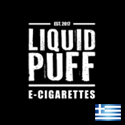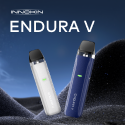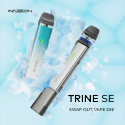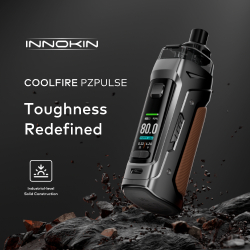VAPING NEWS: SMOKING CESSATION DURING COVID-19 LOCKDOWN
“Dr Caitlin Notley, a harm reduction expert University of East Anglia (UEA), has issued advice to smokers attempting to quit during the COVID-19 lockdown. She says, “It’s more important than ever for smokers to quit, and ex-smokers to remain smoke free.” Dr Notley leads the Addiction Research Group at UEA’s Norwich Medical School and researches tobacco smoking cessation and electronic cigarette use. She also leads a Neonatal unit Smoking Cessation intervention development study. She says that ex-smokers should resist the urge to relapse, given the likely higher COVID-19 risks for smokers, adding that those who have switched to vaping should not return to smoking. Dr Notley thinks that those who still smoke should be encouraged to switch to vaping.”
ARTICLE LINK:
VAPING NEWS: VAPE BAN STUDY
“Months after numerous states reactively banned or overly regulated e-cigarettes, researchers at Rice University’s Baker Institute for Public Policy conducted a study and concluded that vaping offers significant health advantages over smokable tobacco, and that bans are an inappropriate response to a limited problem at the expense of society at large. A commonly proposed solution: a prohibition on vaping products to head off an industry in its infancy. But as the Baker Institute study makes clear, that’s a misguided plan. Just 15 percent of e-cig users of all ages never smoked cigarettes before, which means that for 85 percent of vapers, e-cigs act as a substitute for cigarettes. Given these complexities, a total ban on vaping is a rather poorly targeted measure to prevent nonsmokers from using e-cigs. Moreover, it comes at the expense of the majority of vapers who seek to improve their health by reducing or quitting smoking.”
ARTICLE LINK:
VAPING NEWS: SMOKING CESSATION STUDY
“Smoking cessation counselling alone might not serve the purpose, but with an additional intake of nicotine-containing e-cigarettes can help people quit smoking more successfully, as per a new study. In the clinical trial presented at the American College of Cardiology’s Annual Scientific Session Together with World Congress of Cardiology (ACC.20/WCC), researchers, however, cautioned, that the health effects of e-cigarettes are unknown, and they should not be used for any purpose other than smoking cessation. Overall, those using nicotine-containing e-cigarettes were 2.4 times more likely to quit than those who did not vape at all.”
ARTICLE LINK:
Intake of e-cigarettes with smoking cessation helps to quit faster
VTA – FROM THE TRENCHES April 3, 2020
This week has been another busy week for VTA. As our federal and state governments respond aggressively to the COVID-19 pandemic, VTA remains fully engaged in supporting and advocating for the rights of our community. We ask that you do your part to ensure that we slow the further spread of the virus. We are all in this together.
FDA SEEKS PMTA DEADLINE EXTENSION; COURT ISSUES INDICATIVE RULING
This week, the FDA submitted a letter to the U.S. District Court for the District of Maryland, in American Academy of Pediatrics, et al. v. FDA, et al., asking Judge Grimm to extend the May 12, 2020 court-ordered PMTA deadline by 120-days to September 9, 2020 “in light of the global outbreak of respiratory illness caused by a new coronavirus.”In deciding to request a 120-day extension, the FDA noted that it had received requests from numerous trade associations and companies, including consultants involved in the PMTA process, for extensions “between 8 weeks and 180 days, with the majority of requests for 180 days.” VTA was one of those trade associations that submitted a request to the FDA and did so on March 20, 2020 outlining the basis and necessity for deadline extensions for large manufacturers and small manufacturers. VTA also encouraged the FDA to utilize the additional time to implement PMTA process modifications that will ensure the survival of small businesses and a diverse array of the vapor products on which former smokers now rely.
The District Court initially set a briefing schedule to allow the Plaintiffs time to present their arguments (even though they did not object to the FDA’s request) that ran dangerously close to the May 12, 2020 deadline. However, the Plaintiffs filed their written statement early and, today, the District Court issued an “Indicative Ruling” stating that if the case is remanded to the District Court from the Fourth Circuit Court of Appeals (where the case currently resides), the District Court would extend the May 12, 2020 PMTA deadline to September 9, 2020.
This is an important development and with the understanding that no official order has yet extended the deadline, we presume that if the Court of Appeals remands the case promptly, the District Court will convert the Indicative Ruling into a former order extending the deadline. However, until that time, the deadline remains May 12, 2020. Upon the entry of the final order, we anticipate that the FDA will update its January 2020 guidance as indicated. We will keep you apprised of developments.
IOWA ATTORNEY GENERAL, PUBLIC HEALTH EXPERTS, SEND LETTER TO FDA COMBATING CORONAVIRUS AND VAPING ACCUSATIONS
On Tuesday, Iowa’s Attorney General, Thomas J. Miller, sent a letter to Mitchell Zeller, Director of Center for Tobacco Products at the FDA, challenging the basis of comments made by an FDA spokesperson linking coronavirus and vaping. The letter addressed the seriousness of miscommunication during this time and offered advice to the FDA for how it should be communicating the risks of smoking and vaping at this time, i.e., based on science. The letter was signed by Attorney General Miller and 12 leading harm reduction, public health, and public policy experts. VTA also sent a letter to FDA raising concerns on this same subject and imploring the agency to speak clearly based on science during this difficult time.VAPOR INDUSTRY RALLIES AMIDST COVID-19 CRISIS TO MANUFACTURE HAND SANITIZER AND DELIVER MASKS
Examples are pouring in highlighting how our industry is stepping up to combat the coronavirus. This week we have been working with members and other healthcare industry stakeholders in developing alliances and sourcing materials for the manufacture of hand sanitizer and surgical masks. We are still looking for every example, large and small, of how the companies in our industry have been stepping up to do their part to flatten the curve. If you have not done so already, please send details of what your company has been doing and let us know if you want to be included in our coordinated effort. If you have any questions, examples to share, or are interested in supporting this effort, please send us an email entitled COVID-19 Response to us at: COVID19ReliefTeam@vaportechnology.org.STATE OF THE STATES
This week has been another busy week for VTA and its member associations in statehouses. As state governments respond aggressively to the COVID-19 pandemic and prepare stay-at-home orders, we are working hard to lobby for vapor stores to be identified as essential businesses.FLORIDA FIGHTS FOR FLAVOR BAN VETO
This week, VTA’s Veto SB 810 advertisement campaign continued in Tallahassee, Florida. The campaign calls on Governor DeSantis to veto legislation that would ban the sale of flavored e-liquids sold to adults by over 800 small businesses in Florida. The ad, “Florida’s Economy” highlights the devastating economic and public health consequences this bill would have on the state of Florida. The ad is airing on CNN and Fox News shows in Tallahassee.We are continuing our efforts to reach the Governor and advocate on behalf of our members who would be severely impacted by this legislation, but we NEED YOU and all Florida residents to continue to ask Governor DeSantis to VETO Senate Bill 810. Please take action and tell your friends and colleagues in Florida to contact the Governor here: https://vaperssayveto.com/.
NEW YORK FLAVOR BAN PASSES
Early this morning, despite enormous industry and consumer pushback, the New York State legislature passed a sweeping vapor bill that included a full flavor ban as part of the New York State budget. As we reported earlier, Governor Cuomo had made this a priority – even during the coronavirus fight – and forced the flavor ban into the state budget without so much as a hearing or debate on the issue. VTA’s campaign, alongside New York vape businesses and the most fervent consumer advocates, was strong but hampered by the inability to engage legislators or even test the flavor ban at a hearing because the legislature was on lock down due to coronavirus. VTA has issued a statement on the passing.Here are just a few of the provisions included in the budget bill affecting our industry:
Flavor Ban: The new law bans the sale of flavored vapor products including mint, wintergreen and menthol. Retailers in violation of the law can be subject to civil penalties of up to $100 per individual package of flavor product sold for consumption. Products receiving PMTA approval are exempt from this provision. Because the bill was signed today, the flavor ban will go into effect in 45 days.
Coupons Banned: The law bans the use of coupons for all tobacco and vapor products at the retail level.
Licensing and Shipping: Shipping and transporting vapor products in New York will require licensure as a vapor products dealer. Licensing is through the Commissioner of Taxation. Vapor products shipped into or within the state must be plainly marked as “vapor products.” First offense violation is a class A misdemeanor and a second offense is a class E felony.
Product Ingredient Reporting: Manufacturers will be required to provide a public record of the ingredients and byproducts of each vapor product, in addition to research on the effects on human health for each ingredient listed, and the evaluation of potential alternatives to these ingredients along with the hazards associated with them. Compliance is required by January 1, 2021 and every two years thereafter. A first offense violation is $5,000 and each subsequent offense is $10,000.
Advertising Restriction: Tobacco and vapor product advertising is not permitted in the windows and doors of retail establishments within 1500 feet of a school (500 feet in New York City). Violators are subject to a $500 fine.
The provisions of this law will take effect on July 1, 2020 unless otherwise noted above.
VAPOR TECHNOLOGY ASSOCIATION, et al. v. ANDREW CUOMO, Governor, et al.
The lawsuit through which VTA stopped the executive flavor ban last year, keeping all vapor companies in business in New York, continues on. In the last two weeks, in the midst of the coronavirus pandemic, the Administration asked the Appellate Court to reopen so it could pursue its appeal claiming it was “urgent”. The Appellate Court agreed to hear the case, we are continuing to defend against the unconstitutional overreach of the executive branch in issuing its original flavor ban order. We will see where the case goes in light of today’s developments but, true to form, certain “public health” groups attempted to file a “friends of the court” brief seeking to impact the proceeding. Attached is the VTA’s response that calls out the Campaign for Tobacco Free Kids, American Lung Association and the other petitioners, for their filing in which they appear to intentionally mislead the Appellate Court by failing to advise the court that the FDA banned the flavored products they have been campaigning against and by falsely attacking one of our co-plaintiffs.
KENTUCKY TAX BILL MOVES TO GOVERNOR FOR SIGNING
The VTA Government Affairs team has been engaged on the tax implications of HB 32. The legislative tax language from HB 32 was added to the overall Kentucky Revenue legislation (HB 351) and passed both chambers this week. The language used in the revenue bill removes the floor tax but taxes pods at a rate of $1.50 per pod and adds 15% wholesale tax on open systems. This move was made in haste due to the pending legislative recess and stay at home orders. The revenue legislation HB 351 now moves onto the Governor for signature. We are monitoring for signing and will update accordingly. The provisions of this law will take effect August 1, 2020.
VTA IN THE NEWSFDA ASKS JUDGE TO DELAY E-CIGARETTE DEADLINE, CITING VIRUS
Bloomberg Law covered the FDA’s request for an extension to the May 12 PMTA deadline. Tony Abboud, executive director of the Vapor Technology Association, called the move “a step in the right direction” but said it likely won’t go far enough. VTA sent a letter to the FDA earlier this month requesting a 180-day extension for large manufacturers and a 270-day extension for small ones. To read the full piece, click here.E-CIGARETTE FLAVOR BAN IN NEW YORK STATE BUDGET, LOCAL VAPE SHOPS CONCERNED
The e-cigarette flavor ban made its way into the New York State 2021 budget. “We’re disappointed that Governor Cuomo used a global health emergency to force the New York legislature to pass a ban on flavored vapor products through backroom negotiations and without holding a single hearing or debate,” said Tony Abboud, Executive Director of the Vapor Technology Association. To read the full piece, click here.IN THE NEWS
VAPE SHOPS LOBBY TO KEEP DOORS OPEN AMID VIRUS SHUTDOWNS
Pro-vaping groups are mounting an uphill campaign to persuade federal and state authorities to let vape shops remain open even as other retailers close their doors during the growing outbreak of the new coronavirus. Advocates say vape shops are essential businesses that help keep Americans from buying traditional cigarettes. To read the full piece, click here.VAPING ENTHUSIASTS HOLD VIRTUAL RALLY TO VOICE DESIRE FOR GUBERNATORIAL VETO
The Florida Smoke Free Association (FSFA) hosted a virtual rally urging Governor Ron DeSantis to veto a flavored vaping ban passed by the state legislature. To read the full piece, click here.During this time of uncertainty, we ask that you be safe, be smart and stick with us. As we have always said, we are all in this together. Connect with us and thank you for all you do to protect vapor!
FROM VTA – Vapor Technology Association: Reckless New York Flavor Ban Will Do Little to Protect Youth But Will Result In Dangerous Black Market Products
As New York’s Economy Reels, Flavor Ban Will Hit Empire State’s Economy With $900 Million in Net Loss and Cost 4,600 New Yorkers Their Jobs
Washington, D.C., April 3, 2020 – The Vapor Technology Association (VTA) said today that the ban on flavored vapor products that is now included in the New York state budget will do little to nothing to reduce youth usage since the FDA already banned the flavored products that it found youth are using . Instead, the total ban will eliminate choice for adults and force adult smokers back to combustible cigarettes or to dangerous and illegal black market substitutes.
“We’re disappointed that Governor Cuomo used a global health emergency to force the New York legislature to pass a ban on flavored vapor products through backroom negotiations and without holding a single hearing or debate,” said Tony Abboud, Executive Director of the Vapor Technology Association. “Last year, a New York Appellate Court put a stop to the Administration’s unconstitutional attempt to pursue its flavor ban agenda. Now, through this questionable process, New York is taking actions that will only drive a widespread return to smoking and usher in a dangerous new black market.”
“The youth issue was addressed when the FDA banned the sale of flavored vapor cartridges and pods – the products it identified were used by youth – and when Congress raised the age to purchase products to 21 nationally. For these reasons, the New York ban on flavored vapor products will only harm adult New Yorkers that rely on these products to quit smoking,” said Abboud.
Smoking combustible cigarettes is the leading cause of preventable death and disease in the U.S. New York’s flavor ban will do nothing but drive New Yorkers back to combustible cigarettes which, according to the New York Department of Public Health, takes the lives of 25,400 New Yorkers every year, or nearly 70 New Yorkers every day. New York’s political establishment has just created the greatest impetus for a new and burgeoning black market as adults seek for new ways to access the flavored products they rely on to stay away from combustible cigarettes.
Abboud added, “Despite this, Governor Cuomo has decided to only attack the adult flavored vapor products market, leaving cigarettes readily available. The use of vapor technologies is a safer alternative for adults who are desperately trying to quit smoking. Now is the time that New Yorkers need more access to their flavored vapor products, not less. Now is the time for New York lawmakers to help small businesses stay in business, not shut them down.”
“The New York flavor ban will shut down New York’s independent vapor industry, forcing hundreds of small businesses to close their doors and lay off thousands of workers. At a time when the Empire State’s economy is already suffering, this anti-small business flavor ban will make it even harder for New York’s economy to get back up and running.”
A recent economic impact report, entitled A Flavor Ban Will Decimate New York Small Business, prepared by New York economists John Dunham & Associates (“Dunham”), finds that a state ban on flavors will result in a net loss to the New York economy of more than $900 million in total economic impact in 2020. Specifically, it would result in the loss of an additional $160 million in tax revenue for the state of New York (on top of the lost taxes from the recently enacted federal ban), virtually wiping out the 20% excise tax that New York passed just last year.
“To be clear, government relief programs will not be able to save or revive the hundreds of small businesses and thousands of workers that the Administration and the Legislature have just permanently cast aside,” Abboud said.
VAPING NEWS: NEW YORK [Flavor Ban Passed]
“The state budget approved overnight Thursday was crafted against the backdrop of a pandemic and economic crisis. The final budget bans flavored and menthol e-cigarettes. Sen. Brad Hoylman, D-Manhattan, was also a sponsor of the flavored vaping products ban, which Cuomo had attempted to implement through an executive order late last year. The directive never went into effect as it faced a court challenge from the vaping industry. Hoylman said the pandemic offered an “impetus” to address the youth vaping crisis, as COVID-19 is a respiratory illness.”
NOTE: There has been no direct scientific correlation between e-liquid vapor products and COVID-19
ARTICLE LINK:
Paid sick leave, flavored e-cig ban, bail changes in state budget
FROM REGULATOR WATCH – Science In Crisis | Precipitous fall from Climate, to Vaping to COVID19 | RegWatch (Live)
Here’s the latest from Brent Stafford at Regulator Watch:
Marc Morano is quite simply the world’s number one climate contrarian, a dogged opponent of hysterical science, and a denier of the prophecies of climate doom.
He’s the author of the best-selling 2018 book the “Politically Incorrect Guide to Climate Change” and the award-winning producer, writer and host of the 2016 hit film “Climate Hustle,” which rips the mask off of global warming hype, and exposes the myths and exaggerations behind the science propping up the climate scare.In this episode of RegWatch, Morano joins to discuss the crisis in science that many have recognized with regard to vaping and are now becoming aware of due to the disastrous, catastrophic, overreaction to COVID19 by the scientific community and public health agencies the world over.
As an investigative journalist, he covers the erosion of truth in science; for which he will discuss possible parallels in the science on climate, vaping and now COVID19.
It’s a must-see episode!
Only on RegWatch by RegulatorWatch.com.
Produced by: Brent Stafford
This episode is supported by: DEMAND VAPE
VAPING NEWS: GOV’T ANTI-VAPING AGENDA USING CORONAVIRUS EXCUSE
“Rep. Raja Krishnamoorthi, the Chairman of the Subcommittee on Economic and Consumer Policy, sent a letter urging the Food and Drug Administration (FDA) to use its authority to clear the market of e-cigarettes for the duration of the coronavirus pandemic and use all available tools to encourage Americans to stop smoking and vaping.
The Subcommittee asked FDA to take the following steps for the duration of the coronavirus crisis:
- use all available tools to encourage Americans to stop smoking combustible cigarettes and using e-cigarettes;
- suspend all approvals of Premarket Tobacco Product Applications; and
- commit to immediately clearing the market of all e-cigarettes by prioritizing enforcement against them.”
ARTICLE LINK:
Subcommittee Chairman Demands FDA Clear Market of E-Cigarettes Amid Coronavirus Pandemic
FROM VTA – BREAKING NEWS: FDA SEEKS PMTA DEADLINE EXTENSION
BREAKING NEWS:
FDA SEEKS PMTA DEADLINE EXTENSION CITING COVID-19
March 30, 2020Today, the FDA submitted a letter to the U.S. District Court for the District of Maryland, in American Academy of Pediatrics, et al. v. FDA, et al., asking Judge Grimm to extend the May 12, 2020 court-ordered PMTA deadline by 120-days to September 9, 2020 “in light of the global outbreak of respiratory illness caused by a new coronavirus.”
FDA explained in its submission that “the global coronavirus outbreak poses unforeseen challenges and has made the May 12 deadline a public health risk to those who cannot comply with the deadline through telework.” In addition, FDA explained that telework also will complicate and delay FDA’s review of applications.
In deciding to request a 120-day extension, FDA noted that it had received requests from numerous trade associations and companies, including consultants involved in the PMTA process, for extensions “between 8 weeks and 180 days, with the majority of requests for 180 days.” VTA was one of those entities that submitted a request to FDA and did so on March 20, 2020 outlining the basis and necessity for deadline extensions for large manufacturers and small manufacturers.
At this point in time, no one can predict the length and severity of the COVID-19 commercial shutdown. FDA explicitly recognized this point in the Second Declaration of Mitchell Zeller which accompanied the letter to the Court. In his Declaration, Director Zeller testified: “It is not clear at this point what the precise impact of the COVID-19 outbreak will be on the scope of FDA’s ability to complete application reviews within the 12-month period of time once applications are filed.” That is precisely why VTA requested a new deadline of November 2020 (or at least 180 days from business resumption) for large manufacturers, and a new deadline of February 2021 (or at least 270 days from business resumption) for small manufacturers. To that end, VTA explained that “the question of whether these deadline changes are sufficient or ultimately realistic can and must be re-evaluated in the coming months as more information comes to light about the length and severity of the commercial shutdown due to COVID-19.”
Moreover, VTA also encouraged FDA to utilize the additional time to implement PMTA process modifications that will ensure the survival of small businesses and a diverse array of the vapor products on which former smokers now rely.
In its letter to the District Court, FDA notes that the plaintiffs (American Academy of Pediatrics, et al.) will not oppose the FDA’s request, though the plaintiffs have requested the opportunity to “express their misgivings about the extension on the record.” In order to rule, Judge Grimm still will have to have the case remanded to him by the Fourth Circuit and then he would need to make his decision on whether or not to grant the FDA’s request.
However, given the strong case made by the FDA, the obvious insurmountable obstacles created by the coronavirus, and the apparent lack of opposition by the plaintiffs, a ruling extending the deadline is reasonably likely though still not certain.
We will continue to monitor the situation and will keep you apprised.SIGN UP AND STAY INFORMED
Make sure you stay up to date on all things vapor. Visit https://vaportechnology.org and sign up for our newsletter.
During this time of uncertainty, we ask that you be safe, be smart and stick with us. As we have always said, we are all in this together. Connect with us and thank you for all you do to protect vapor!
FROM REGULATOR WATCH – Time Running Out? | COVID-19, PMTA, Suspect Science | RegWatch (Live)
Here’s the latest from Brent Stafford at Regulator Watch:
Time Running Out?
COVID-19, PMTA, Suspect Science | RegWatch
Time is (if not already) running out for the U.S. vaping industry. Hit by a trifecta of crises: teen vaping epidemic, vaping-related lung illness and COVID19; the FDA’s Pre-market Tobacco Application deadline quietly lurks in the background, preparing to pounce, and destroy vaping as we know it.Is this hyperbole? That’s what we are going to find out in this episode of RegWatch with Greg Conley, president of the American Vaping Association.
Only on RegWatch by RegulatorWatch.com.
P.S. if you are not a supporter yet (nudge nudge) please click below.
Support makes RegWatch happen (CLICK HERE)









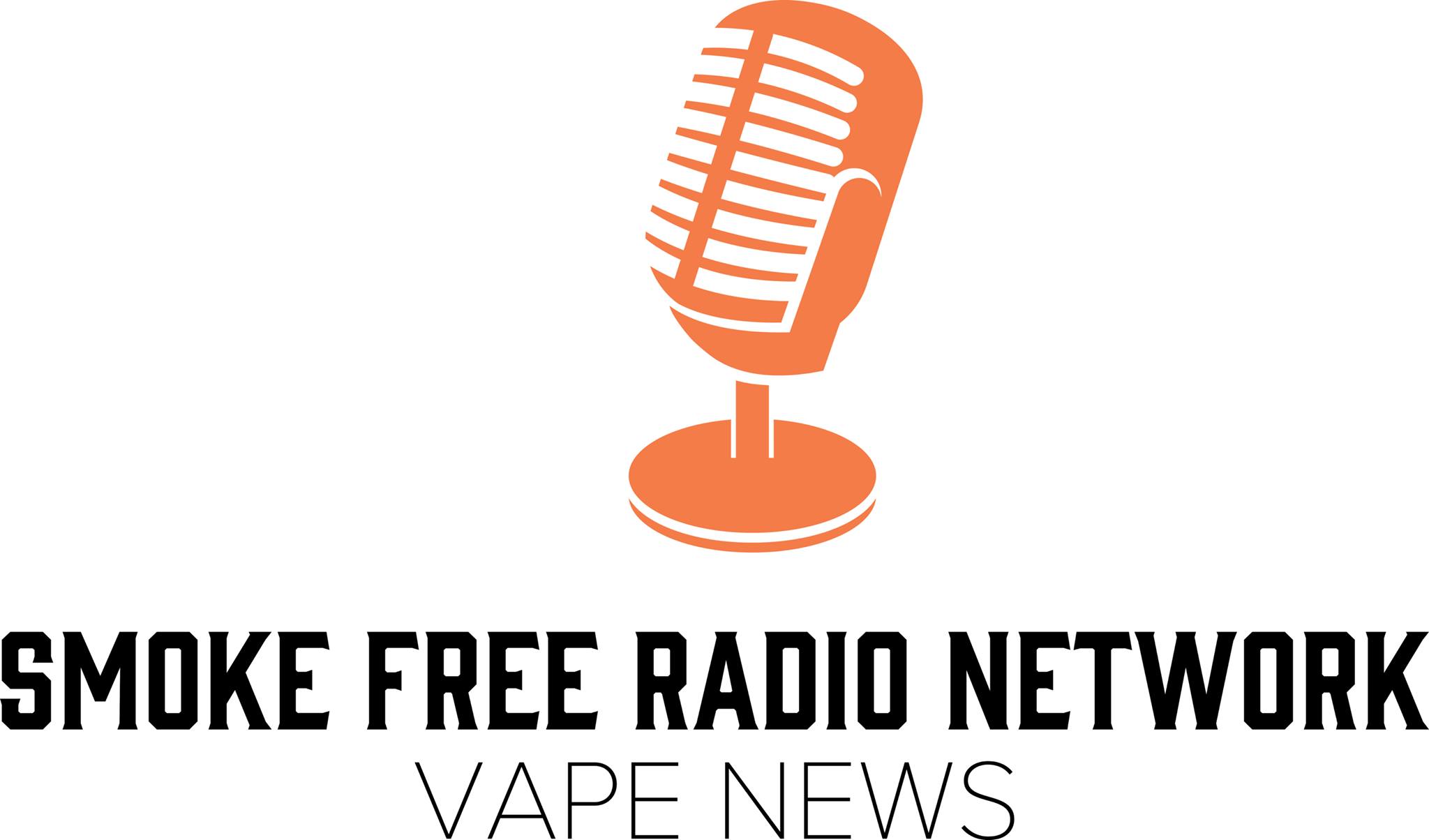



 Store
Store




